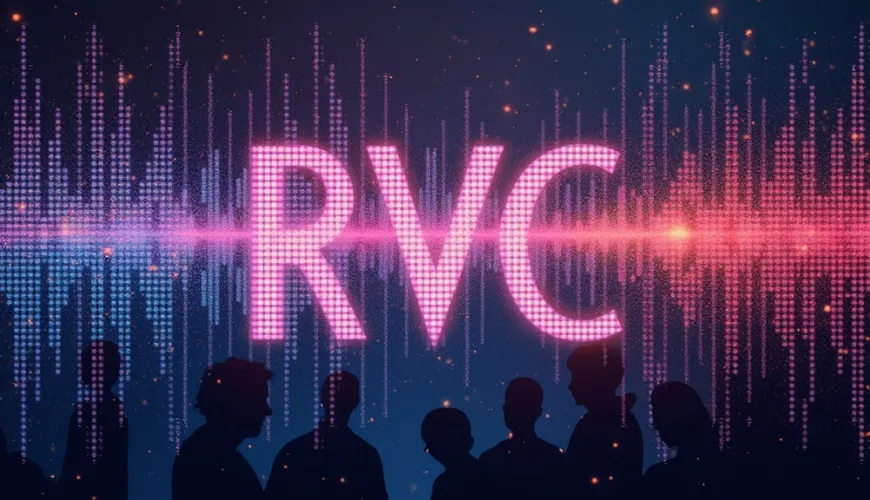What is RVC AI?
Retrieval-based Voice Conversion (RVC AI) is an emerging technology that allows users to transform one voice into another with remarkable accuracy. Unlike traditional voice changers that rely on pitch-shifting or pre-set filters, RVC AI uses deep learning and a retrieval-based architecture to maintain the nuances and natural flow of human speech or singing. This means it can produce high-quality, realistic voice conversions that closely mimic the target voice in tone, style, and emotion.
Popularized in recent years by creators in music, gaming, and broadcasting, RVC AI is now being adopted for a wide range of applications—from music covers to real-time voice modulation in livestreams. Thanks to platforms like Claila offering easy access to models like ChatGPT and Claude alongside image tools, creators are integrating RVC into larger AI-powered workflows. You can also see how visual tools such as ai-fantasy-art or comfyui-manager complement RVC in creative pipelines.
Create Your Free Account
How RVC AI Works Behind the Scenes
At its core, RVC AI combines the principles of voice conversion and information retrieval. It begins by training on a dataset of the target speaker or singer's voice. This dataset helps the model learn the vocal patterns, timbre, and intonation unique to that person. Once trained, the model can then convert any input voice to sound like the target voice in real-time or through batch processing.
What makes RVC different from earlier voice conversion systems is its use of a retrieval-based mechanism. Instead of generating new waveforms entirely from scratch, the system retrieves relevant audio segments from the training data to guide the synthesis. This retrieval step significantly enhances voice consistency and realism, especially in singing voice conversion.
It also relies on a pitch extraction model and a feature extraction model—often based on HuBERT or similar architectures—to separate pitch and content during conversion. These parts work together to ensure that the output voice retains the linguistic content of the input voice while adopting the vocal style of the target.
Key Use Cases of RVC AI
One of the reasons why RVC AI is gaining so much attention is its wide range of practical and creative applications. Let's look at some popular use cases and how they're transforming user experiences.
Singing Voice Conversion
Perhaps the most viral use of RVC AI has been in music. Artists and hobbyists alike are using this technology to create cover songs in the voice of famous singers. For instance, fans have recreated popular songs using the voice of Freddie Mercury or Ariana Grande, generating millions of views on social platforms.
This has opened up creative freedom for musicians who may not have the vocal range or style of certain artists but can now experiment freely using RVC to bring their visions to life. Combined with AI art tools like those found on our AI fantasy art blog, entire multimedia projects are being built around this fusion of voice and visual storytelling.
Livestreaming and Content Creation
Streamers and VTubers are also embracing RVC AI for real-time voice swapping. Whether it's for privacy, roleplaying, or entertainment, being able to modulate one's voice live has become a key tool in the toolkit of many content creators. Imagine a game streamer taking on the voice of a character they're playing—it adds an immersive layer to the experience.
This application often pairs well with visual tools like the ones explored in our ComfyUI Manager article, offering full-spectrum AI-driven content creation pipelines.
Creative Projects and Storytelling
Writers, podcasters, and digital artists are using RVC AI to narrate stories in unique voices, including fictional or historical characters. With platforms like Claila already integrating various language models such as Claude and Mistral, voice becomes another dimension in multi-modal storytelling.
Pairing this with tools like AI animal generators or visual scene creators can bring fictional worlds to life. Think of a fantasy audiobook where each character has a distinct RVC-modified voice, enhancing listener immersion.
RVC v1 vs v2: What's the Difference?
As with any evolving technology, RVC AI has gone through multiple versions, with v1 and v2 being the most widely discussed.
RVC v1 introduced the basic architecture and retrieval-based approach, offering good quality voice conversions with moderate training data. However, it was somewhat limited in terms of pitch accuracy and required a bit more technical know-how to fine-tune results.
RVC v2 features a higher-dimensional embedding architecture—HuBERT outputs and net_g inputs increase from 256 in v1 to 756 in v2—which can improve the granularity and detail of voice representation . Some users report smoother training stability and better clarity in high-resolution speech, as noted in certain RVC WebUI tutorials . While real-time inference is possible depending on hardware and optimization, performance may vary and should be benchmarked per setup.
If you're just starting out, it's highly recommended to begin with v2 models. Not only do they produce better results, but many community tools and interfaces have now standardized around v2.
Getting Started: Setup and Usage for Beginners
Starting with RVC AI might seem intimidating, but with the right tools and some patience, anyone can get it working. First, you'll need a dataset of the target voice—often as little as around 10 minutes of clean, isolated audio has been shown to be sufficient to train an effective model via the RVC WebUI . This could be your own voice or that of a public figure—though ethical considerations apply, which we'll cover shortly.
Next, you'll train a model using open-source tools. Several community-driven platforms provide graphical interfaces that simplify the process. For example, RVC WebUI gives you a browser-based dashboard to train and run conversions, while Google Colab notebooks allow you to experiment in the cloud without owning a high-end GPU. Platforms such as Claila also provide pre-trained models and voice tools so you can start experimenting immediately without building everything from scratch.
After training your model, you can begin converting audio using your input voice recordings. These tools allow you to adjust pitch, speed, and other parameters to fine-tune results.
Integrating with other AI productivity tools can streamline your workflow. If you're already using ChatGPT or Claude on Claila for script writing, you can quickly generate narratives, then use RVC AI to voice them—perfect for videos or podcasts.
Ethical and Legal Considerations
While RVC AI unlocks exciting creative possibilities, it also brings up serious ethical and legal concerns. One of the most pressing issues is impersonation. Because the technology can replicate voices so accurately, there's a real risk of someone using it to mislead, scam, or defame others.
Copyright is another gray area. Using the voice of a celebrity or public figure without permission—especially for commercial gain—can breach their publicity rights and lead to legal actions. Even if the audio is not directly lifted from existing recordings, the replication of someone's vocal identity could be considered a form of intellectual property infringement.
To use RVC AI responsibly, creators should always seek permission when using someone else's voice, especially for public or monetized projects. Being transparent with audiences about the use of AI-generated voices can also help build trust and avoid backlash.
For personal, educational, or transformative uses—like parody or fan art—the rules may be more flexible, but it's still important to tread carefully. Staying informed and up-to-date with evolving laws is key, especially as governments begin to regulate AI-generated content more strictly.
A helpful tip for creators is to develop their own unique voice models. Using your own voice dataset ensures full ownership and sidesteps legal complications. Plus, you can still use RVC AI to give your voice different styles or emotional tones.
For more on responsible AI usage, check out our guide on creating undetectable AI content without crossing ethical lines.
Tools and Interfaces in 2025
As RVC AI matures, its ecosystem has expanded with more refined tools and user-friendly interfaces. In 2025, many of these tools come equipped with drag-and-drop functionality, real-time monitoring, and advanced parameter controls that make the process accessible even to non-technical users.
The most widely used tools in 2025 include modern WebUIs that support real-time voice conversion, desktop plug-ins that integrate directly with audio or video editing suites, and community hubs where users share and download models. These platforms are designed to lower the barrier to entry with drag-and-drop functions and real-time monitoring.
They also connect smoothly with other AI ecosystems. For example, converted voice tracks can be paired with animation or art projects, as discussed in our chargpt article, making it easier to synchronize characters with dialogue.
A Glimpse into What's Next
As RVC AI continues to improve in quality and accessibility, it's quickly becoming a staple in the creative toolkit. Whether you're a musician looking to experiment with new vocals, a storyteller giving voice to characters, or a streamer adding flair to your livestreams, RVC AI offers a level of customization that was once unthinkable.
With multi-modal platforms like Claila supporting a range of AI functionalities, voice conversion is no longer a standalone feature—it has become part of a broader movement towards fully AI-assisted creativity. As new developments roll out, expect RVC AI to play an increasingly central role in shaping the soundscapes of the future.
Create Your Free Account


